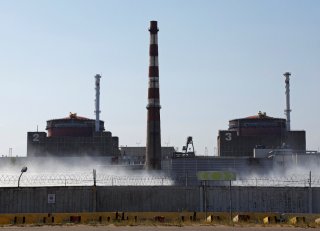Courting Disaster: Shelling Rocks Zaporizhzhia Nuclear Plant
The IAEA said in a statement on November 21 that agency chief Rafael Grossi intensified “consultations aimed at establishing a protection zone at the plant” following the renewed strikes.
The Zaporizhzhia nuclear power plant (NPP) was rocked by shelling over the weekend, reviving concerns of a nuclear disaster at Europe’s largest atomic energy plant.
The International Atomic Energy Agency (IAEA) warned that bombing in past days has come “dangerously close” to hitting “key nuclear safety and security systems at the plant,” according to Ukrainian media outlet Ukrinform. “We are talking metres, not kilometres. Whoever is shelling at the Zaporizhzhya Nuclear Power Plant, is taking huge risks and gambling with many people’s lives,” the IAEA added. A team sent by the agency to assess the consequences of the strike said it found no evidence of critical damage to the facility’s core systems. “They were able to confirm that—despite the severity of the shelling—key equipment remained intact and there were no immediate nuclear safety or security concerns,” the IAEA said in a statement.
The head of Russia’s state energy agency, Rosatom, warned on Monday that there is a risk of nuclear disaster at the plant. “We are informing the international community that the plant is at risk of a nuclear disaster and Kiev clearly believes that a small nuclear incident would be acceptable. However, radiation won’t ask Kiev what kind of incident it wants. It will be a precedent that will change the course of history forever,” Rosatom said, according to the Russian state news outlet TASS.
The Zaporizhzhia NPP, located near the city of Enerhodar in the southeastern Zaporizhzhia region, fell under Moscow’s control in the early stages of the Russian invasion. The Kremlin has since announced its annexation of Zaporizhzhia, among three other regions, despite the fact that the regional capital, Zaporizhzhia city, remains in Ukrainian hands.
Russia and Ukraine have traded blame over frequent shelling allegations at the NPP. The Russian Defense Ministry said Kyiv resumed attacks on the NPP after a two-month break. The Kremlin claimed Ukraine fired twenty-five munitions at the plant between November 19-20, with one of them hitting a nuclear fuel storage site. Ukraine accused Russian forces earlier this summer of shelling the NPP, urging the international community to pressure Russia into withdrawing from the plant. The Kremlin claims it has no reason to strike a facility currently held by Russian forces.
The G7 called in a statement late last month for the plant to be restored under Ukrainian control. “We urge Russia to immediately return full control of the ZNPP to its rightful sovereign owner, Ukraine, to remove all Russian personnel from the facility, and to stop any attempts to recklessly and dangerously place the ZNPP under Russian administration, which could further jeopardize its safe and secure operations,” the statement read.
The IAEA said in a statement on November 21 that agency chief Rafael Grossi intensified “consultations aimed at establishing a protection zone at the plant” following the renewed strikes. Grossi lamented last month that progress in establishing a protection zone, first proposed by the agency in September, has been “slow.” The need for such an agreement is “as self-evident as anything can be,” Grossi added. “How can you shell a nuclear power plant for God sakes? And it is happening.”
Mark Episkopos is a national security reporter for the National Interest.
Image: Reuters.

